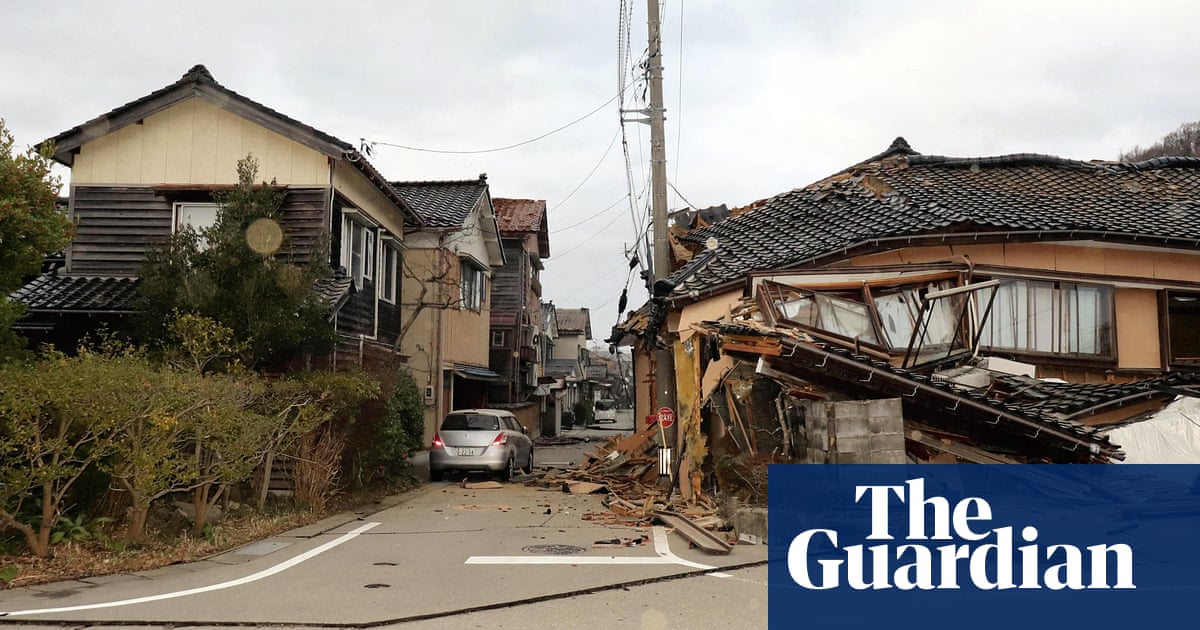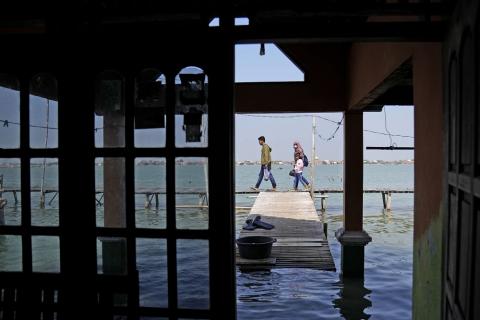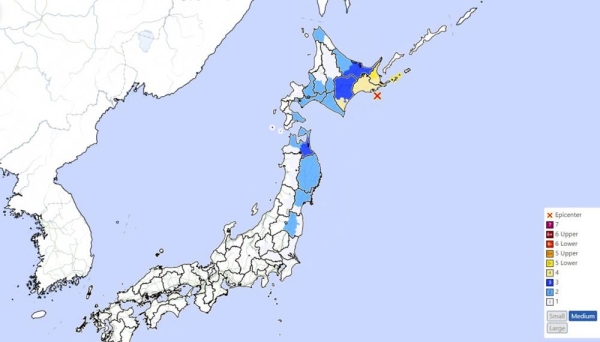
No tsunami warning was issued after the relatively shallow quake, which struck 62 kilometres (39 miles) southeast of the regional capital Sapporo
Officials have lost contact with 20 people near the epicentre and an 82-year-old man died after falling down the stairs at his home during the quake
TOKYO: A powerful 6.6 magnitude quake hit the northern Japanese island of Hokkaido on Thursday, triggering landslides, bringing down several houses, and killing at least one person with several dozen missing.
No tsunami warning was issued after the relatively shallow quake, which struck 62 kilometres (39 miles) southeast of the regional capital Sapporo.
An aftershock measuring 5.3 rocked the area moments later and smaller aftershocks followed throughout the night.
At least four landslides were reported after the quake, government spokesman Yoshihide Suga said, adding that six homes had collapsed.
TV footage showed dozens of houses at the bottom of a hill engulfed by a landslide. Japan"s Self-Defence Forces have been dispatched to help with recovery efforts.
"The SDF is already deploying some 4000 troops for (rescue work), and it plans to strengthen the number to 25,000 troops. We will do our best to save lives," said Prime Minister Shinzo Abe after an emergency cabinet meeting.
According to public broadcaster NHK, officials have lost contact with 20 people near the epicentre and an 82-year-old man died after falling down the stairs at his home during the quake. Around 50 people have been injured.
Hokkaido Electric said 2.95 million homes had lost power after the quake but industry minister Hiroshige Seko said the government hopes to restart power "in several hours."
The Tomari nuclear power plant in Hokkaido stopped operations due to the blackout but its cooling system was working using its emergency back-up power, NHK said.
"The government will work together towards reconstruction while giving the top priority to saving human lives," Abe told reporters.
Suga urged residents to listen out for updates on TV and radio, as officials warned of the risk of further quakes.
"Large quakes often occur, especially within two to three days (of a big one)," said Toshiyuki Matsumori, in charge of monitoring earthquakes and tsunamis at the meteorological agency.
He added the risk of housing collapses and landslides had increased in the area hit by the quake, saying: "We urge residents to pay full attention to seismic activity and rainfall and not to go into dangerous areas."
Japan sits on the Pacific "Ring of Fire" where many of the world"s earthquakes and volcanic eruptions are recorded.
In June, a deadly tremor rocked the Osaka region, killing five people and injuring over 350.
On March 11, 2011, a devastating 9.0-magnitude quake struck under the Pacific Ocean, and the resulting tsunami caused widespread damage and claimed thousands of lives.
Japan is still recovering from the worst typhoon to hit the country in 25 years, which struck the western part of the country on Tuesday, claiming at least 11 lives and causing major damage to the region"s main airport.










